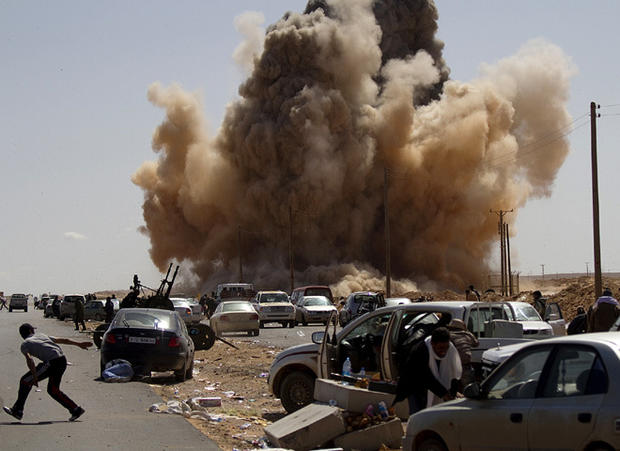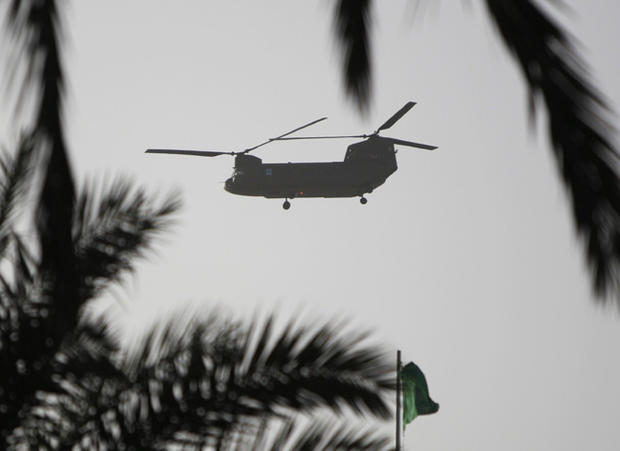U.S., NATO in holding pattern on no-fly zone
President Barack Obama said the U.S. and NATO are considering a military response to the violence in Libya, and a U.N. resolution to establish a no-fly zone is being drafted.
And while there is no sign that a no-fly zone over Libya is imminent, the option will undoubtedly be on the table when Defense Secretary Robert Gates attends a NATO meeting of defense ministers on Thursday, reports CBS News national security correspondent David Martin.
Rebel forces have asked the international community to impose a no-fly zone to ward off further air strikes against them, but they've rejected the idea foreign ground troops.
Despite the continued air strikes, a Pentagon official told CBS News that Libyan leader Muammar Qaddafi's use of fixed wing and rotary aircraft is having "limited effect." Air attacks seem to be "against fortified rebel positions" as opposed to civilians, although President Obama has said Qaddafi needs to end violence against his own people, without distinguishing between rebel fighters and civilians.Some of the Libyan forces' flights are for logistical purposes, and indications are that Qaddafi is using aircraft less frequently than he was a few days ago, while focusing the bulk of his ground forces against rebels to the west of Tripoli (since they are the most immediate threat to the capital), the official said.
A British diplomat at the United Nations said a draft resolution imposing a no-fly zone is being prepared in the event it is necessary, though there has been no decision yet on introducing it to the Security Council.
President Barack Obama has made clear that all options are on the table, including a no-fly zone, but U.S. officials have also stressed that any military action must be an international effort.
Options short of a no-fly zone include a show of force off the coast and jamming communications, the Pentagon official said.
Several U.S. senators (including John McCain) have called on the Obama administration to support a no-fly zone.
But enforcing a no-fly zone could take weeks to organize, and U.S. Defense Secretary Robert Gates warned last week that imposing a no-fly zone would amount to an act of war because "a no-fly zone begins with an attack on Libya" to destroy its air defenses.
Photos: Refugees flee Libya
Libyan warplanes strike rebels at key oil port
Complete coverage: Anger in the Arab World
Meanwhile, Navy destroyers currently in the Mediterranean, as well as Marines aboard amphibious ships, have no stated mission, reports Martin. The aircraft carrier USS Enterprise remains in the Red Sea, awaiting orders to proceed through the Suez Canal.
In his latest comments on Libya, Mr. Obama said Monday, "I want to send a very clear message to those who are around Colonel Qaddafi. It is their choice to make how they operate moving forward. And they will be held accountable for whatever violence continues to take place."
Officials from the U.N. refugee agency said more than 200,000 foreigners have escaped Libya since the unrest began, and up to 1 million foreign workers and others still trapped in the country are expected to need emergency aid.

